
Related
Guests
- Emily Bazelonstaff writer at The New York Times Magazine and the Truman Capote fellow for creative writing and law at Yale Law School.
- Jena Griswoldsecretary of state of Colorado.
The coronavirus pandemic poses unprecedented challenges to the November presidential election, as President Trump and the GOP capitalize on the moment to attack voting rights. We speak with Emily Bazelon, staff writer at The New York Times Magazine, whose new cover story examines the bureaucratic and political challenges of mobilizing widespread vote-by-mail by November. We also speak with Jena Griswold, secretary of state of Colorado, which already has universal vote-by-mail and the second-highest voter turnout in the country.
Transcript
AMY GOODMAN: This is Democracy Now!, democracynow.org, The Quarantine Report. I’m Amy Goodman, as we turn from the Electoral College to the issue of voting from home and the question, “Can Democracy Survive the Pandemic?” That’s the headline of this week’s New York Times Magazine cover story.
In it, reporter Emily Bazelon writes, quote, “Two-thirds of Americans expect the Covid-19 outbreak to disrupt voting in November, according to a late-April survey by the Pew Research Center. A successful election will require some Covid-era changes. The main one is enabling tens of millions more people to vote by mail (also called absentee balloting — the terms are synonymous) than have ever done so before. It’s also important to make adjustments to keep polling places open for people who don’t have stable mailing addresses — a group that increases as people are uprooted during an economic downturn — or whose disabilities, like blindness, make it hard to fill out a ballot unassisted,” she writes.
This comes as President Trump’s son-in-law, senior adviser Jared Kushner, was asked by Time magazine this week if he thought the election would be held in November.
BRIAN BENNETT: Is there any scenario, including a second outbreak in the fall, where the elections move past November 3rd?
JARED KUSHNER: That’s too far in the future to tell. Nothing that I’m aware of now, but, again, our focus right now is just on getting the country —
BRIAN BENNETT: Well, will you commit that the elections will happen on November 3rd?
JARED KUSHNER: It’s not my decision to make, so I’m not sure I can commit one way or the other. But right now that’s the plan.
AMY GOODMAN: That’s Jared Kushner being interviewed by Time magazine’s Brian Bennett. “Too far in the future to tell”?
Well, for more, we’re joined by Emily Bazelon, staff writer for The New York Times Magazine. Again, her cover story asks, “Will Americans Lose Their Right to Vote in the Pandemic?” She’s also the Truman Capote fellow for creative writing and law at Yale Law School.
Also with us is Colorado Secretary of State Jena Griswold, who’s quoted in the piece. Colorado is one of five states that send ballots by mail to every registered voter.
We welcome you both to Democracy Now! Why don’t you start with that, Emily Bazelon, Jared Kushner saying it’s too far in the future to tell whether the elections will be held in November?
EMILY BAZELON: So, Congress passed a law in 1845 setting the date of the election on the first Tuesday after the first Monday in November. It’s very precise. It would take both houses of Congress to change that law. It has nothing to do with Jared Kushner. And I assume that he didn’t know anything about that when he tried to answer that question.
AMY GOODMAN: So, let’s talk about your piece. You begin in Wisconsin, that amazing moment. Explain what happened with that primary.
EMILY BAZELON: Wisconsin had a really difficult election on April 7th. There was a lot of confusion leading up to the election about whether it was going to happen. The governor tried to postpone it. He is a Democrat. The Republican-controlled Legislature said no. The governor also proposed sending absentee ballot applications to all the registered voters in the state. The Republican Legislature also refused to do that. The election — challenges to the election went to the Wisconsin Supreme Court and the United States Supreme Court, and they refused to also postpone the election, by splitting on ideological lines.
So, there were many, many more people trying to vote by mail in Wisconsin than had ever done so before. They went from 3% to over 70%. And that was really hard for local election officials to handle. They got behind on mailing out ballots. There were probably about 12,000 people who didn’t get their ballots in time to vote.
The other problem was there were cities that could only open a few polling places, because a lot of their poll workers, a lot of them older, didn’t feel safe working the polls. So you saw these very long lines of people trying to social distance, standing in line to vote. And unfortunately, there have been some coronavirus infections that were linked to the polls that day.
AMY GOODMAN: How many, do you expect?
EMILY BAZELON: The last time I checked, it was over 50.
AMY GOODMAN: Well, I want to ask you about that moment in the Wisconsin primary, which really laid bare the voting crisis that coronavirus poses here. The election took place, as you said, on April 7th, after this protracted battle between the Democratic Governor Tony Evers and the state’s Republican Legislature. After the state Supreme Court blocked Evers’ ruling to delay the election 'til June, thousands of voters braved the statewide remain-at-home order and queued in these long lines to cast ballots. In Milwaukee, home to Wisconsin's largest African American community, just five of the city’s usual 180 sites were open.
And what went viral — we want to turn to this clip — it’s Wisconsin’s Republican state Assembly Speaker Robin Vos defending his support for in-person voting during the deadly pandemic, while wearing a surgical mask, gloves and hospital gown at a polling place.
ASSEMBLY SPEAKER ROBIN VOS: Everybody is here safe. They have very minimal exposure. Actually, there’s less exposure here than you would get if you went to the grocery store or you went to Walmart or you did any of the many things we have to do to live in the state of Wisconsin.
AMY GOODMAN: So, that was Robin Vos saying it’s perfectly safe. He’s covered head to toe. Emily Bazelon?
EMILY BAZELON: Right. So, I think the response of a lot of voters was, “You may feel safe, because you have all the protective equipment you need, but we don’t. And you have forced us today to choose between our health and safety and being able to exercise our right to vote.”
AMY GOODMAN: So, let’s take this national, and what this means, what has to happen. The cover of The New York Times Magazine is a mask, and on the side of it is a little “I voted” sticker. And on the inside of the piece is a mailbox with — covered in “I voted” stickers. Let’s talk right now about the significance of mail-in voting, in a way that people haven’t felt perhaps the urgency before.
EMILY BAZELON: There are many states in the country, the majority of states, where you can request an absentee ballot, and you don’t need to make an excuse. You don’t have to say “I’m sick” or “I’m traveling.” You can just ask for one. However, a lot of those states have never rolled out a huge mail-in election before. So, Jena Griswold, your other guest, she comes from Colorado. Her state, she knows how to do this. They’ve done it before.
In my state of Connecticut, only, in the past, 3 or 4% of people have voted absentee in previous elections. So, you imagine, if Connecticut, if 50 or 60 or 70% of us want to vote absentee this time, the state is going to have to change how they do business. They’re going to have to order much, much more paper. They’re going to have to make sure that they have relationships with vendors that can handle an order like that. They need new machines to tabulate votes. They need to train election officials to verify signatures and make sure the ballots are OK to be counted.
This is a huge task. And it’s a logistical task. It’s like planning for testing and tracing in the pandemic. It takes advance planning and organization, and it takes a lot of money. And that is a big burden on the states that they are just starting to ramp up for. And they, as yet, do not have adequate funding for that from Congress.
AMY GOODMAN: You know, Emily, I think, for the first time, perhaps, most Americans now understand what supply chain is all about, because when it comes to tests, when it comes to masks, that have been so woefully inadequate in this country, what planning means — again, the election is in November. So, let’s bring Jena Griswold into this conversation, Colorado’s secretary of state. Explain exactly how the system works in Colorado, Secretary.
SECRETARY OF STATE JENA GRISWOLD: So, we believe in accessible voting. So we have online voter registration, early voting for several weeks before Election Day, same-day voter registration. And then, the big one, we mail a mail ballot to every registered voter. And to share with you the results, in just our presidential primary, 97.5% of Coloradans voted at home.
AMY GOODMAN: Say that number again, and compare it to how many people vote nationally in the United States.
SECRETARY OF STATE JENA GRISWOLD: Sure. So, in our presidential primary, 97.5% of Coloradans voted their mail ballot. And to put that into perspective, not only do we have the highest rate of registered eligible people in the nation, we also have the highest turnout rate consistently. So, our presidential primary, we surpassed the turnout rate of every other state in the nation, with almost nearly everyone voting their mail ballot.
Now, it is important to maintain in-person voting, which we’re about to do for our June 30th statewide primary, because there are going to be some people who, for different reasons, just can’t vote that mail ballot.
But the bottom line is, mail ballot needs to be expanded nationally as soon as possible. Wisconsin should serve as a wake-up call. If we do not expand national ballot, not only will Americans have to choose between safeguarding their health and casting a ballot; what I do fear that we’re going to see is the pandemic used to suppress turnout. And if we have too low of turnout, that really affects the legitimacy of an election.
AMY GOODMAN: I wanted to turn to President Trump, to get your response to what he said. This was in an interview on Fox & Friends, where he was celebrating the fact that the $2.2 trillion stimulus package left out provisions by Democrats in earlier versions of the bill that would have expanded voting access.
PRESIDENT DONALD TRUMP: If you look at before and after, the things they had in there were crazy. They had things, levels of voting, that if you ever agreed to it, you’d never have a Republican elected in this country again.
AMY GOODMAN: He continually also attacks mail-in voting, though he does that himself. I want to get Secretary Griswold, and then Emily Bazelon, talking about what Trump’s opposition to this means.
SECRETARY OF STATE JENA GRISWOLD: Well, I think, in this instance, President Trump was very straightforward: He opposes mail ballot because he thinks Republicans will lose seats. Not only is it reprehensible to put politics above Americans’ health and force Americans into unhealthy voting, having really crowded polling locations, not enough polling locations — that’s bad in itself. But on top of it, it’s just untrue. Colorado shows that Republicans can win in mail ballot systems. A U.S. senator has won. Many statewide officials have won on the Republican side under our system. So the claim that it benefits one side more than the other just isn’t true.
And at the end of the day, if this nation does not act, we will see Republicans, Democrats and independents all deciding whether to sit out the November election. That’s not good for our democracy. And frankly, that’s not good for President Trump, either. And I wish he could recognize that.
AMY GOODMAN: Emily Bazelon, if you could also respond to this point he’s making, that Republicans will lose if more people vote?
EMILY BAZELON: Yeah, it’s really interesting, because the research shows what Secretary Griswold was pointing to, which is that voting by mail does not actually have a partisan effect. It’s neutral. It doesn’t help Democrats; it doesn’t help Republicans. What it does do is boost turnout. And so, there is this assumption that President Trump — and some other Republicans make this assumption, as well — that if more people vote, they are more likely to lose.
AMY GOODMAN: I want to ask about the repeated attacks on vote-by-mail by people, of course, other than by President Trump, by Republicans claiming to be attacking voter fraud. In Georgia, the new secretary of state, Brad Raffensperger, a Republican, has announced an absentee ballot fraud task force to investigate signature mismatches and other issues. In your New York Times Magazine piece, you quote Lauren Groh-Wargo of Fair Fight Action, who says the task force is “a submission to the Trump voter-suppression machine.” Explain.
EMILY BAZELON: So, yes. In Georgia, I think the concern of voting rights advocates, like Lauren Groh-Wargo, is that people will hear they’re going to be investigated if they vote by mail, and they’ll get nervous about it. And that will intimidate them in a way that will discourage voting.
I think it’s also important to connect this to a longtime voter suppression tactic among conservatives. So, you go back to the '60s, you had poll taxes, literacy tests, to try to prevent African Americans from voting. Then we have the Voting Rights Act. It becomes illegal to do things like that. But you start to see a push for voter identification at the polls. And the justification for voter ID laws was we're preventing fraud.
So, it turns out there’s almost no fraud at the polls. If you think about it, it would be really hard to turn an election by having people show up and vote twice. You’d need a lot of people to do that and get away with it. It just isn’t really a problem.
And so, that does not stop conservatives and a lot of Republicans, however, from making this charge over and over again. We’re seeing it now with a complaint about voting by mail, even though states like Secretary Griswold’s, with a really good track record and practically universal voting by mail, have very low levels of fraud.
And you also see it with something called purging, which is this idea of cleaning up the voter rolls by cutting people off of them if they haven’t voted for a while or if their names don’t exactly match in other databases. And similarly, the rationale given for purging the rolls is to prevent fraud.
But the reality of fraud is just much, much smaller — really tiny — compared to the amount of people who end up with barriers to voting for these reasons.
AMY GOODMAN: Emily Bazelon, is the Trump campaign spending its election money on efforts to limit voting by mail?
EMILY BAZELON: There is at least $10 [million], I think now it’s up to $20 million, that the Republican National Committee has set aside for lawsuits relating to the election. You know, this is perfectly normal. The Democrats are spending money on lawsuits, too. But the Republicans are doing things like challenging an all-vote-by-mail primary in New Mexico, a conservative group challenging a similar effort in Nevada.
And then we also are seeing the Republicans just gear up for election monitoring, for their efforts on the day of the election, for the people who do vote at the polls, you know, perhaps to interfere with their right to vote. That is something that has happened in the past. They’ve been blocked from doing what’s called ballot security for many years because of a consent decree they agreed to in the 1980s. But that consent decree will be gone for the first presidential election in 40 years. And so that’s another potential for spending this kind of money on.
AMY GOODMAN: The military has been doing mail-in voting for what? Two hundred years?
EMILY BAZELON: Well, yeah. It started in the Civil War. You’re right. That’s where we get the idea of absentee balloting from. There was actually a struggle through World War I and World War II over how much absentee balloting soldiers would be able to do. But yes, they have been doing it this way for a long time.
AMY GOODMAN: So, let me conclude where we started, with the title of your New York Times “piece”:”:https://www.nytimes.com/2020/05/05/magazine/voting-by-mail-2020-covid.html: “Can Democracy Survive the Pandemic?”
EMILY BAZELON: Well, it certainly can. South Korea just had a completely calm and orderly election. People voted by mail. They also socially distanced at the polls. It went fine. There’s no reason why America can’t do this. And we still have time. But it’s an urgent task to get everything ready. And because Congress hasn’t passed the funds to make that easily possible, I think this is a time for kind of concern and paying a lot of attention to this issue.
AMY GOODMAN: What would it cost?
EMILY BAZELON: Well, the estimates from the Brennan Center for Justice are $4 billion. That would include all the primary elections as well as the general election in November. So far, Congress has pledged only $400 million. So you see there’s a really big gap there. And that is really hamstringing some of the states.
AMY GOODMAN: I want to thank you both for being with us. Emily Bazelon, staff writer at The New York Times Magazine, we will link to your cover story, “Can Democracy Survive the Pandemic?” And I want to thank Colorado Secretary of State Jena Griswold, joining us from Denver.
And that does it for our broadcast. The amazing Democracy Now! team is working with as few people as possible on site, the majority of our team working from home. Special thanks to our general manager, Julie Crosby. Democracy Now! is produced with Renée Feltz, Mike Burke, Deena Guzder, Libby Rainey, Nermeen Shaikh, Carla Wills, Tami Woronoff, Charina Nadura, Sam Alcoff, Tey-Marie Astudillo, John Hamilton, Robby Karran, Hany Massoud, Adriano Contreras and María Taracena. Special thanks to Miriam Barnard, Denis Moynihan, Paul Powell. I’m Amy Goodman. Thanks so much for joining us.

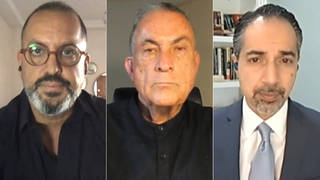
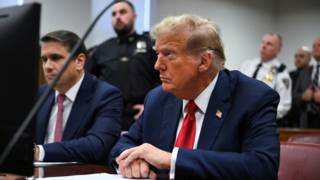
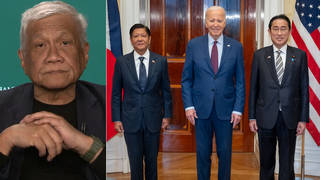
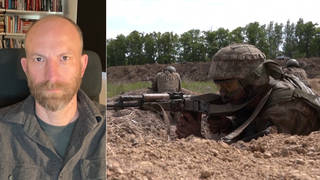





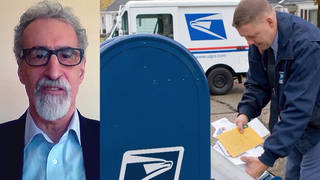
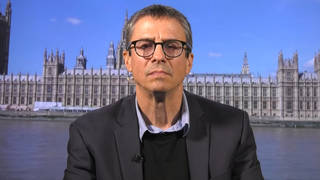
Media Options